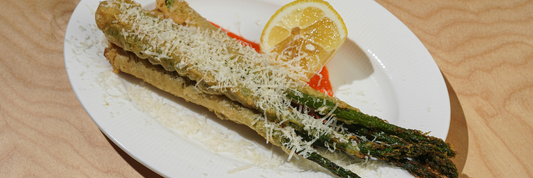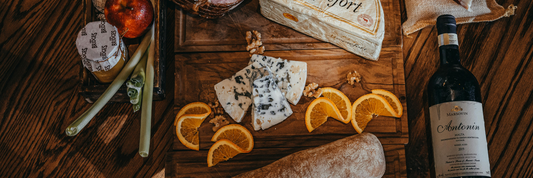Have you ever watched a sushi master at work the way they handle a knife, select a cut of fish, or shape each grain of rice? Behind that simple piece of sushi lies hours of training, precision, and an unshakable pursuit of excellence.
The “Sushi Master” represents more than a chef; it’s a philosophy of patience, detail, and respect for craft.
At Kimecopak, we see a strong parallel between that dedication and what it means to create sustainable packaging. Each bag, cup, or box is carefully crafted from material sourcing to design to performance just like a sushi master curates every dish with balance and harmony.
This article explores how storytelling built around the “Sushi Master” archetype can elevate your brand’s perceived value and set it apart in an increasingly competitive, eco-conscious market.
-
How to Introduce Cold Ramen (Hiyashi Chuka) to North American Customers
-
5 Tips to Store Ramen Noodles Without Getting Soggy While Waiting
-
Comparing Wooden, Bamboo, and Paper Packaging for Sushi Take-Out
Why the “Sushi Master” is a Powerful Storytelling Archetype

The Symbol of Expertise, Discipline, and Perfection
The “Sushi Master” is the embodiment of mastery someone who has dedicated years to refining their technique, guided by precision and humility.
In Japanese culture, sushi is not just food it’s artistry in simplicity. Every cut, every plate is a testament to craft and respect for the ingredients.
When applied to branding, this archetype signals:
- Expertise: You know your craft deeply.
- Discipline: You don’t cut corners, even when no one is watching.
- Perfection: You care about every small detail that others overlook.
The “Mastery” Concept in Sustainable Packaging — Kimecopak’s Role
In the world of sustainable packaging, “mastery” means:
- Selecting renewable, compostable, or recyclable materials;
- Testing durability and performance under real conditions;
- Balancing cost, aesthetics, and environmental impact;
- Controlling quality across production batches.
At Kimecopak, we see ourselves as Masters of Sustainable Packaging. Our story is not about mass production it’s about precision, integrity, and impact. Just as a sushi master perfects every grain of rice, we perfect every layer of packaging ensuring it protects both your food and the planet.
How to Structure a “Sushi Master” Brand Story

Character – Conflict – Transformation – Resolution
Every strong brand story follows a human-centered arc:
- Character – Who’s the “master” in your story? It could be your founder, your design team, or your brand itself.
- Conflict / Challenge – What struggles did you face? Rising material costs, environmental waste, or customer skepticism?
- Transformation – How did you overcome these challenges? Innovation, research, partnerships?
- Resolution / Impact – What changed as a result? Better products, cleaner ecosystems, more trust from customers.
When told well, this framework builds both logic and emotion helping customers feel your brand’s dedication, not just see it.
The Emotional Value Touchpoints
To make your story resonate:
- Be authentic. Show real challenges, not just polished victories.
- Be detailed. A single vivid image (“each layer of film is checked by hand”) often says more than paragraphs.
- Be meaningful. Link your craftsmanship to customer and environmental values.
For example:
“Each cup from Kimecopak is the result of hundreds of tests, designed to hold your drinks perfectly just as a sushi master balances flavor and form.”
Applying the “Sushi Master” Narrative in Kimecopak’s Strategy

In Content Marketing & Blogging
- Feature Stories: Showcase your “masters” material engineers, sustainability experts, or creative designers who embody care and skill.
- Series Content: Create “Layer by Layer” blog posts, each revealing one part of the packaging process from sourcing bamboo fiber to testing coating durability.
- Customer Case Studies: Tell stories of F&B businesses that grew their eco reputation using Kimecopak’s packaging the “Master empowers the apprentice” concept.
In Packaging Design & Customer Experience
- On-Pack Storytelling: Print short storytelling snippets on packaging e.g., “Made from responsibly sourced sugarcane crafted with care, layer by layer.”
- Layered Design: Use multiple visual textures or labels representing the “layers of mastery.”
- Unboxing Experience: Let customers unfold the story. When they open the package, include a short message or QR code that reveals the “Making Of” journey.
In Advertising & Multi-Channel Communication
- Short-form Video: 30–60 seconds showing “the master at work” slow-motion shots of quality control, material cutting, or testing.
- Social Media Micro-Stories: Each post highlights one subtle detail “Today our master checks moisture resistance in bamboo pulp cups.”
- Live Workshops or Events: “A Day as a Master” let influencers or business owners try crafting a piece of sustainable packaging, creating experiential storytelling.
Benefits of Using “Sushi Master” Storytelling

Enhancing Brand Recognition & Differentiation
In crowded markets, brands with memorable stories outperform those with plain data.
According to Shopify, strong storytelling can increase brand recall by up to 55% compared to fact-based messaging.
The “Sushi Master” narrative gives your brand a unique emotional signature — elegance, precision, and depth.
Increasing Perceived Value and Premium Pricing
A study by The Brand Shop found that products with emotional storytelling can achieve up to 2,706% higher perceived value.
When customers understand why your packaging is special, they are willing to pay more not for the material itself, but for the meaning it carries.
Building Emotional Loyalty & Advocacy
As Forbes reports, storytelling strengthens emotional bonds that drive customer loyalty and word-of-mouth marketing.
For sustainable packaging a category often seen as “invisible” storytelling gives it a soul.
Customers no longer buy a box; they buy into a movement, a philosophy, a promise.

Checklist: 7 Steps to Build Your Own “Sushi Master” Story
| Step | Action | Notes |
|---|---|---|
| 1 | Identify your “Master” figure | Who represents craftsmanship — founder, engineer, designer? |
| 2 | Collect authentic insights | Include challenges, failures, and lessons learned. |
| 3 | Map your story structure | Character → Conflict → Transformation → Impact |
| 4 | Link it to your industry | Translate “precision” and “ritual” into your process. |
| 5 | Craft micro-stories | Use short posts, quotes, or infographics to tell parts of the journey. |
| 6 | Embed storytelling in experience | Include on-pack messages, QR codes, or behind-the-scenes videos. |
| 7 | Measure and optimize | Track engagement, story shares, conversions, and brand sentiment. |
Conclusion
Telling your brand story through the lens of a Sushi Master isn’t about glorifying perfection it’s about honoring the invisible labor, patience, and mastery behind every sustainable choice.
When done authentically, storytelling transforms your packaging from a commodity into a canvas one that communicates care, craftsmanship, and conscience.
At Kimecopak, we believe every eco-friendly product has a story worth telling.
A story of innovation, responsibility, and love for the planet told with the precision of a master and the warmth of a storyteller.
FAQ
1. Is the “Sushi Master” storytelling framework suitable for all industries?
Yes. Any brand built on skill, process, or quality can adapt this archetype. For creative or lifestyle brands, it can evolve into “The Artisan,” “The Maestro,” or “The Maker.”
2. How can I avoid making the story sound exaggerated or fake?
Be transparent. Share real trials and behind-the-scenes moments. Authenticity connects deeper than perfection ever will.
3. How often should brands share storytelling content?
Use a layered approach micro-stories (social posts or reels) weekly, and one major storytelling campaign quarterly or around key product launches.
4. How do I measure storytelling success?
Track engagement metrics such as:
- Time on page and scroll depth for storytelling blogs
- Shares and comments on social media
- QR scans from packaging to story pages
- Sales uplift or average order value for products linked to storytelling campaigns
5. Should storytelling be told directly or through experience?
Both. Direct storytelling builds clarity; experiential storytelling (unboxing, workshops, videos) builds emotional memory. Together, they create long-term resonance.
-
LEARN MORE about How "Subscribe for a Happy Life" will benefits your business HERE!
-
LEARN MORE about Kim Vu, sharing on the challenges she faced as a former restaurant owner, and how she overcame them to create KimEcopak HERE!




